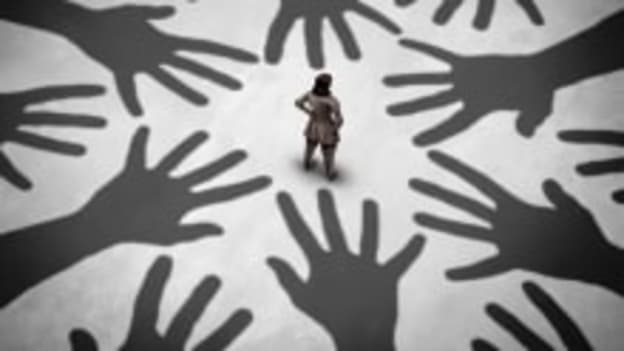Beyond ICCs: What else can organizations do to prevent sexual harassment at work?

The #MeToo movement has shown that workplaces are among the most common sites for the systematic abuse of gender dynamics and power, resulting in more widespread sexual harassment (SH) at work than what is actually reported.
The Sexual Harassment of Women at Workplace (Prevention, Prohibition and Redressal) Act, 2013 has introduced legal safeguards. However, there are serious hindrances to making use of these redressal mechanisms:
- Formal complaint mechanisms such as Internal Complaint Committees (ICCs) are intimidating setups; usually the red tape involved and the grouped stance discourages formal reporting
- These formal mechanisms kick in only after the sexual harassment has occurred
- Lack of evidence, especially if harassment took place behind closed doors, means that justice may not be served
- The onus of reporting is primarily on the target (victim)
- The required “POSH training” risks becoming yet another ‘check the box’ exercise to prevent organizational liability rather than preventing SH
We believe that there are a few steps organizations can take to complement these formal mechanisms and transform the culture in a sustainable way that benefits everyone.
Focus POSH trainings on physical and psychological safety
Presently, the focus of POSH trainings is often narrowly centered around legal safeguards and policy measures. In a bid to make workplaces safer, such a unidimensional focus on the technical and legal aspects is incomplete. Sexual harassment as a phenomenon has layers of gender stereotyping, conditioning, sexist attitudes, lack of sensitivity and/or awareness about respect and consent. We, therefore, propose expanding the scope of POSH trainings to include related concepts: gender equality (at work and at home/in society), consent in relationships, creating safe spaces of mutual respect and inclusion.
A specific aspect that has gained attention recently is ‘Psychological Safety’ (especially after Google’s Project Aristotle). Introduced by researcher Dr. Amy Edmondson, ‘psychological safety at work’ refers to a climate where people feel their team is a place where they can speak up, offer ideas, and ask questions without fear of being punished or embarrassed. Research has found that experiencing psychological safety within the work team is associated with a more conducive environment of learning, information sharing and employee satisfaction: all three also essential to talk about the uncomfortable experience of sexual harassment at workplace. Edmondson viewed psychological safety as comprised of: peer support, role clarity, interdependence, positive leader relations and learning orientation. These specific elements easily lend themselves to actions organizations can take that can enhance psychological (and physical) safety at work. For instance, organizations that promote high levels of psychological safety are also likely to be the ones that take complaints of sexual harassment seriously and consistently, ensuring that employees feel heard and treated fairly.
Tap into the power of ‘others’ – especially observers and leaders
The legal and procedural system of addressing SH at the workplace is currently designed so that the onus of reporting and stopping the harassment lies primarily with the target. At the same time, we often see examples of seemingly-callous behavior on the part of bystanders – people choose to turn a blind eye or take a passive role as observers of SH because of the fear of consequences (formal or informal, especially if the harasser occupies a senior position) of engaging with a situation that is not inherently ‘theirs’ to deal with.
One way to reconcile these observations is to recognize that others have incredible untapped action potential. These ‘others’ include witnesses, bystanders, indirect observers who hear about an incident later, and of course those ‘in charge’ – managers and organizational leaders. Unburdening the target by diffusing active responsibility to others is an understudied and ignored avenue. These ‘others’ have a powerful range of behaviors they can choose to engage in, even though the most effective way to intervene will differ based on situation, roles of those involved, organizational culture and several other factors.
People in leadership positions are in an especially powerful position to be able to deal with sexual harassment as observers because they possess more resources and agency to stop it. Modeling high-integrity, sensitive, proactive and values-driven action can go a long way in creating a safe climate and giving momentum to the justice mechanisms when needed.
Embed inclusion, respect and other organizational values into the culture
The current approach in most organizations is to see sexual harassment an anomaly and something to react to, manage or ‘hush up’ when it occurs. A more sustainable model might be to consider inclusion and respect as a must-have, similar to how we consider certain core competencies and organizational values as non-negotiables at work. A practical way to do this would be to include these attributes in organizational competency frameworks, which will allow it to become part of hiring, performance reviews and developmental feedback.
Another interesting possibility is to adopt a “Giving Voice to Values” approach, as proposed by researchers Dr. Stacie Chappell and Dr. Lynn Bowes-Sperry in 2015. The GVV is an action-oriented approach to sexual harassment that resonates closely with the key elements of psychological safety. It encourages employees to act on and express their personal values, thus aspiring to a workplace where all members are able to voice their stance and intervene, especially when encountering inappropriate behavior directed at self or others.
By expanding the scope of POSH trainings, encouraging ‘others’ (especially leaders) to step up and respond, and enhancing organizational culture, we hope that organizations find effective and sustainable ways to promote safe workspaces for all.














